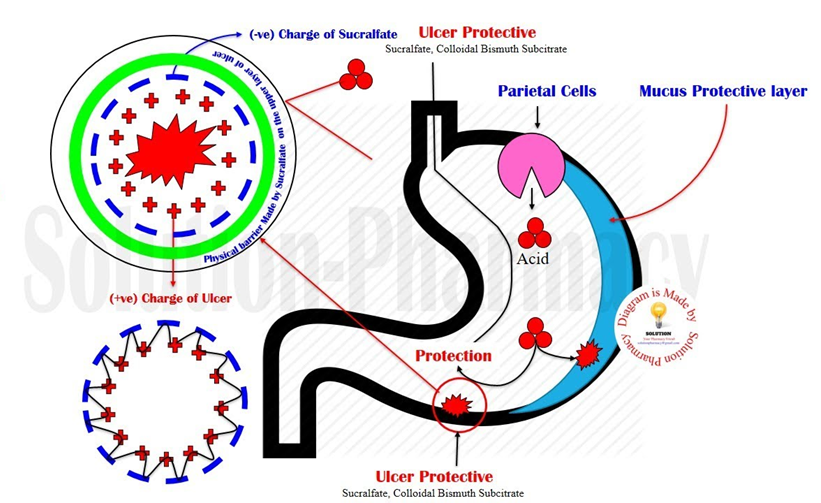The physician writes an order for ziprasidone hydrochloride (Geodon) 80 mg. Each tablet contains 20 mg. How many tablets would you administer?
The Correct Answer is ["4"]
To give the patient the prescribed dose of ziprasidone hydrochloride (Geodon), you need to calculate the number of tablets required.
One tablet contains 20 mg of the drug, so you need to divide the ordered dose by the tablet strength.
80 mg / 20 mg = 4 tablets.
Therefore, you would administer four tablets of ziprasidone hydrochloride (Geodon) to the patient.
Nursing Test Bank
Naxlex Comprehensive Predictor Exams
Related Questions
Correct Answer is D
Explanation
A. Calm the patient to reduce acid production.
This description is not accurate for sucralfate. Calming the patient to reduce acid production is typically associated with medications like proton pump inhibitors (PPIs) or H2 receptor blockers.
B. Block the H2 receptors.
Blocking H2 receptors is the mechanism of action for H2 receptor blockers, such as ranitidine. It is not the mechanism of action for sucralfate.
C. Neutralize the gastric acids.
Neutralizing gastric acids is the mechanism of action for antacids, such as aluminum hydroxide or calcium carbonate. Sucralfate works differently; it forms a protective coating on the gastric lining rather than directly neutralizing acids.
D. Coat the gastric lining.
This is the correct mechanism of action for sucralfate. It forms a protective coating on the gastric lining, adhering to the ulcer site and providing a barrier against gastric acid.

Correct Answer is ["A","C","E"]
Explanation
A. Bradycardia
Bradycardia (slow heart rate) is a symptom of cholinergic crisis. Excessive stimulation of acetylcholine receptors can lead to bradycardia.
B. Rash
Rash is not typically associated with cholinergic crisis. Instead, it may be associated with other conditions or drug reactions.
C. Vomiting
Vomiting is a symptom of cholinergic crisis. Excessive stimulation of the gastrointestinal tract by acetylcholine can lead to increased gastrointestinal motility and nausea/vomiting.
D. Fever
Fever is not typically associated with cholinergic crisis. Instead, it may suggest an infection or other inflammatory condition.
E. Drooling
Drooling is a symptom of cholinergic crisis. Excessive stimulation of salivary glands by acetylcholine can lead to increased salivation and drooling.
Whether you are a student looking to ace your exams or a practicing nurse seeking to enhance your expertise , our nursing education contents will empower you with the confidence and competence to make a difference in the lives of patients and become a respected leader in the healthcare field.
Visit Naxlex, invest in your future and unlock endless possibilities with our unparalleled nursing education contents today
Report Wrong Answer on the Current Question
Do you disagree with the answer? If yes, what is your expected answer? Explain.
Kindly be descriptive with the issue you are facing.
